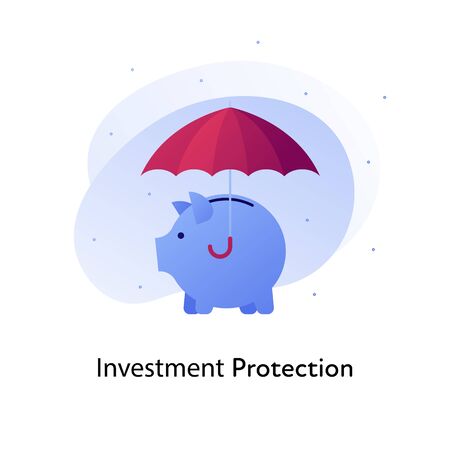1. What Are Employer-Sponsored Pension Plans?
Employer-sponsored pension plans are retirement savings programs that employers offer to help employees prepare for their financial future. These plans provide a structured way for workers to save money for retirement, often with contributions from both the employer and the employee. They are designed to offer financial security after an individual leaves the workforce.
(1) How Do Employer-Sponsored Pension Plans Work?
These plans typically function by deducting a portion of an employees salary and investing it into a retirement account. Employers may also contribute to the plan, either by matching a percentage of the employees contributions or funding the plan entirely. Over time, the funds grow through investments, ensuring that employees have a source of income when they retire.
(2) Types of Employer-Sponsored Pension Plans
There are different types of employer-sponsored pension plans, each with its own structure and benefits. The two primary types include:
| Type of Plan | Description |
|---|---|
| Defined Benefit Plans | These plans guarantee a specific payout at retirement based on factors such as salary history and years of service. The employer is responsible for managing the investments and ensuring there is enough money to pay retirees. |
| Defined Contribution Plans | With these plans, employees contribute a portion of their salary, often with employer matching contributions. The final retirement amount depends on investment performance. Examples include 401(k) and 403(b) plans. |
(3) Benefits of Employer-Sponsored Pension Plans
Having access to an employer-sponsored pension plan offers several advantages, including:
(1) Tax Advantages
Many plans offer tax-deferred growth, meaning employees dont pay taxes on contributions or earnings until they withdraw funds in retirement.
(2) Employer Contributions
Some employers match employee contributions, effectively providing free money that helps grow retirement savings faster.
(3) Automatic Savings
Deductions happen directly from an employee’s paycheck, making it easier to save consistently without needing to take additional action.
(1) Financial Security in Retirement
By participating in these plans, employees can build a stable financial foundation for their post-work years.
(2) Investment Growth Potential
Funds in defined contribution plans are typically invested in stocks, bonds, and mutual funds, offering opportunities for long-term growth.
(3) Portability Options
Many modern pension plans allow employees to roll over their savings if they change jobs, ensuring continued retirement growth.
Understanding how employer-sponsored pension plans work is crucial for making informed decisions about retirement savings. These plans provide significant benefits that can help individuals achieve long-term financial stability.
2. Types of Employer-Sponsored Pension Plans
When it comes to employer-sponsored pension plans, there are two primary types: defined benefit plans and defined contribution plans. Understanding how each works can help you make informed decisions about your retirement savings.
Defined Benefit Plans
Defined benefit (DB) plans, often referred to as traditional pensions, provide retirees with a predetermined monthly income based on factors such as salary history and years of service. These plans are primarily funded by employers and offer financial security in retirement.
Key Features of Defined Benefit Plans:
- Guaranteed retirement income based on a formula
- Employer-funded with little or no employee contribution required
- Long-term stability but limited portability if you change jobs
- Pension amount is not affected by market fluctuations
Defined Contribution Plans
Defined contribution (DC) plans, such as 401(k)s, place more responsibility on employees for their retirement savings. Employees contribute a portion of their salary, often with an employer match, and the final retirement benefit depends on investment performance.
Key Features of Defined Contribution Plans:
- Employee contributions with potential employer matching
- Investment-based growth with market-dependent returns
- Fully portable when changing jobs
- Requires active management and financial planning
Main Differences Between Defined Benefit and Defined Contribution Plans
| Feature | Defined Benefit Plan | Defined Contribution Plan |
|---|---|---|
| Payout Structure | Fixed monthly payments in retirement | Lump sum or withdrawals based on savings |
| Employer vs. Employee Contributions | Mainly employer-funded | Mainly employee-funded with potential employer match |
| Investment Responsibility | Borne by employer | Borne by employee |
| Risk Exposure | No market risk for employees | Affected by market fluctuations |
| Portability | Difficult to transfer if changing jobs | Easily transferable between employers |
The choice between these two types of pension plans depends on your career path, risk tolerance, and retirement goals. Understanding their differences can help you maximize your benefits and secure a stable financial future.

3. Benefits of Participating in a Pension Plan
Enrolling in an employer-sponsored pension plan offers several advantages that can significantly impact your financial future. From tax benefits to employer contributions and long-term financial security, participating in these plans can be a smart move for retirement planning.
Tax Advantages
One of the biggest perks of a pension plan is the tax benefits it provides. Depending on the type of plan, you may receive tax-deferred growth or even tax-free withdrawals during retirement.
(1) Tax-Deferred Contributions
Many pension plans allow you to contribute pre-tax dollars, reducing your taxable income for the year. This means you pay less in taxes now while growing your retirement savings.
(2) Tax-Free Growth
The money inside your pension plan grows without being taxed until you withdraw it. This allows your investments to compound more efficiently over time.
(3) Potential Tax-Free Withdrawals
If you have a Roth-style pension plan, your qualified withdrawals in retirement may be entirely tax-free, giving you more spending power when you need it most.
Employer Contributions
Many employers offer matching contributions or direct funding into pension plans, helping employees build their retirement savings faster.
| Type of Employer Contribution | Description |
|---|---|
| Matching Contributions | Your employer contributes a percentage of your salary based on how much you contribute. |
| Pension Fund Contributions | Your employer fully funds the pension without requiring employee contributions. |
| Profit-Sharing Contributions | Your employer contributes based on company profits, which may vary yearly. |
Long-Term Financial Security
A well-structured pension plan helps ensure financial stability during retirement, reducing the risk of outliving your savings.
(1) Guaranteed Income Stream
Traditional pension plans provide guaranteed monthly payments for life, offering peace of mind compared to market-dependent retirement accounts.
(2) Reduced Financial Stress
Having a reliable source of income in retirement lowers financial anxiety and helps cover essential living expenses.
(3) Protection Against Inflation
Certain pensions include cost-of-living adjustments (COLAs), ensuring that your purchasing power remains strong even as prices rise over time.
4. How to Maximize Your Pension Benefits
Making the most of your employer-sponsored pension plan requires a strategic approach. By understanding how contributions work, making smart investment choices, and planning for long-term financial security, you can ensure a comfortable retirement.
Employer Contributions: Get the Most Out of Matching
Many employers offer matching contributions to encourage employees to save for retirement. To take full advantage of this benefit, consider these key strategies:
(1) Contribute Enough to Get the Full Match
If your employer offers a 100% match on contributions up to 5% of your salary, make sure you contribute at least that amount. Otherwise, youre leaving free money on the table.
(2) Understand Vesting Schedules
Some employer contributions require you to stay with the company for a certain period before they become fully yours. Check your plan’s vesting schedule to avoid missing out on potential benefits.
Smart Investment Choices
Your pension plan may offer several investment options. Choosing wisely can significantly impact your retirement savings growth.
(1) Diversify Your Investments
A well-balanced portfolio reduces risk while maximizing potential returns. Consider a mix of stocks, bonds, and other assets based on your risk tolerance.
(2) Adjust Investments as You Age
Younger employees can afford to take more risks with growth-focused investments. As retirement nears, shifting toward more stable investments helps protect your savings.
(3) Take Advantage of Target-Date Funds
If youre unsure how to allocate assets, target-date funds automatically adjust investments based on your expected retirement date.
Ensuring a Secure Retirement
A strong pension strategy goes beyond just saving—it also involves careful planning for the future.
(1) Regularly Review Your Pension Plan
Your financial situation and retirement goals may change over time. Reviewing your plan annually ensures it aligns with your needs.
(2) Consider Additional Retirement Accounts
If your employer-sponsored plan isn’t enough, look into IRAs or other investment vehicles to supplement your savings.
(3) Plan for Taxes on Withdrawals
Pension distributions are typically taxable income. Understanding tax implications can help you manage withdrawals efficiently during retirement.
5. Key Considerations and Risks
Understanding Vesting Periods
Vesting refers to the amount of time you must work for an employer before gaining full ownership of employer-contributed funds in your pension plan. While your personal contributions are always yours, employer contributions may require a vesting period before they become fully accessible.
Types of Vesting Schedules
| Vesting Type | Description |
|---|---|
| Immediate Vesting | You gain full ownership of employer contributions right away. |
| Cliff Vesting | You must work for a set number of years (e.g., 3 years) before receiving 100% of the employer contributions. |
| Graded Vesting | You gain a percentage of employer contributions over time (e.g., 20% per year over five years). |
Potential Risks of Employer-Sponsored Pension Plans
(1) Market Fluctuations
If your plan is tied to investments, the value of your pension can fluctuate based on market conditions, affecting your retirement savings.
(2) Employer Financial Stability
If your employer faces financial difficulties or bankruptcy, there could be risks to pension funding, though certain protections exist through organizations like the Pension Benefit Guaranty Corporation (PBGC).
(3) Contribution Limits and Changes
Your employer may adjust their contribution matching policy or change the plan structure, potentially affecting how much you accumulate over time.
What Happens If You Switch Jobs?
(1) Vesting Status Check
If youre not fully vested when you leave, you may lose some or all of the employer-contributed portion of your pension.
(2) Rollover Options
You may have the option to roll over your pension funds into another retirement account, such as an IRA or a new employer’s plan, to avoid penalties and taxes.
(3) Cashing Out Considerations
Cashing out early could result in significant tax penalties and reduce your retirement savings. Understanding these implications is crucial before making a decision.

